VW ID.4 vs Kia EV4 Hatchback – Which car suits you better?
Everyday use, family trips or long-distance drives – here’s where the differences show.
Discover whether VW ID.4 or Kia EV4 Hatchback fits your lifestyle better.
Costs and Efficiency:
Price and efficiency are often the first things buyers look at. Here it becomes clear which model has the long-term edge – whether at the pump, the plug, or in purchase price.
Kia EV4 Hatchback has a hardly perceptible advantage in terms of price – it starts at 32200 £, while the VW ID.4 costs 34600 £. That’s a price difference of around 2352 £.
In terms of energy consumption, the advantage goes to the Kia EV4 Hatchback: with 14.90 kWh per 100 km, it’s minimal more efficient than the VW ID.4 with 15.60 kWh. That’s a difference of about 0.70 kWh.
As for range, the Kia EV4 Hatchback performs barely noticeable better – achieving up to 625 km, about 56 km more than the VW ID.4.
Engine and Performance:
Power, torque and acceleration are the classic benchmarks for car enthusiasts – and here, some clear differences start to show.
When it comes to engine power, the VW ID.4 has a evident edge – offering 340 HP compared to 204 HP. That’s roughly 136 HP more horsepower.
In acceleration from 0 to 100 km/h, the VW ID.4 is distinct quicker – completing the sprint in 5.40 s, while the Kia EV4 Hatchback takes 7.40 s. That’s about 2 s faster.
In terms of top speed, the VW ID.4 performs hardly perceptible better – reaching 180 km/h, while the Kia EV4 Hatchback tops out at 170 km/h. The difference is around 10 km/h.
There’s also a difference in torque: VW ID.4 pulls significantly stronger with 679 Nm compared to 283 Nm. That’s about 396 Nm difference.
Space and Everyday Use:
Cabin size, boot volume and payload all play a role in everyday practicality. Here, comfort and flexibility make the difference.
Both vehicles offer seating for 5 people.
In curb weight, Kia EV4 Hatchback is slight lighter – 1811 kg compared to 1975 kg. The difference is around 164 kg.
In terms of boot space, the VW ID.4 offers somewhat more room – 543 L compared to 435 L. That’s a difference of about 108 L.
In maximum load capacity, the VW ID.4 performs somewhat better – up to 1575 L, which is about 160 L more than the Kia EV4 Hatchback.
When it comes to payload, VW ID.4 somewhat takes the win – 551 kg compared to 459 kg. That’s a difference of about 92 kg.
Who wins the race?
The VW ID.4 proves to be wins the duel decisively and therefore becomes our DriveDuel Champion!
VW ID.4 is the better all-rounder in this comparison.

VW ID.4
VW ID.4
The VW ID.4 represents Volkswagen's commitment to the electric vehicle market, combining contemporary design with sustainability. Its spacious interior and intuitive technology make it an attractive choice for those seeking comfort and innovation in an eco-friendly package. With a focus on electric performance and practicality, this car is set to be a popular option among environmentally-conscious drivers.
details @ Volkswagen
@ Volkswagen
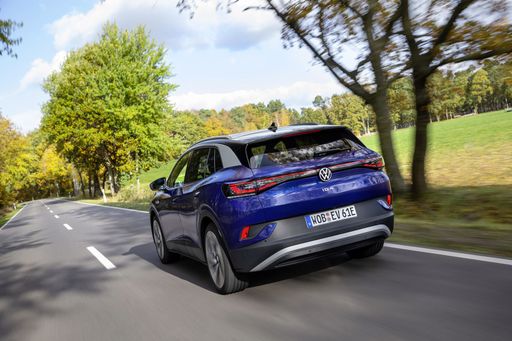 @ Volkswagen
@ Volkswagen
 @ Volkswagen
@ Volkswagen
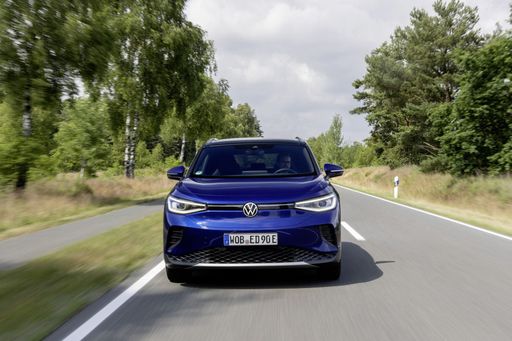 @ Volkswagen
@ Volkswagen
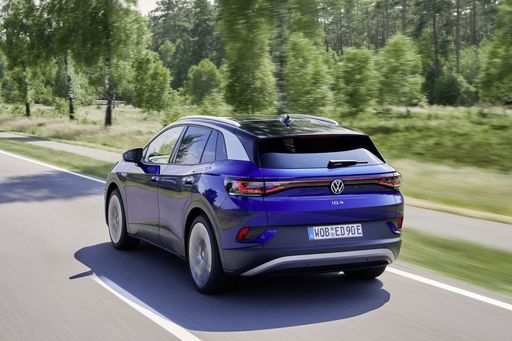 @ Volkswagen
@ Volkswagen
 @ Volkswagen
@ Volkswagen
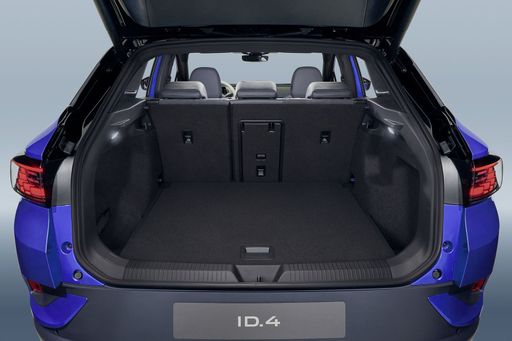 @ Volkswagen
@ Volkswagen
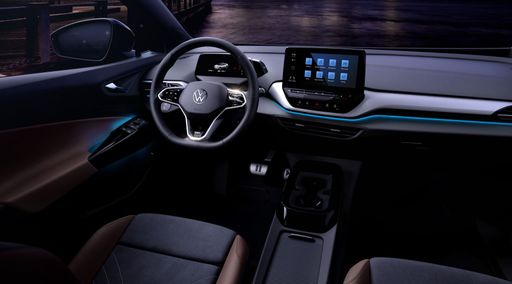 @ Volkswagen
@ Volkswagen
Kia EV4 Hatchback
The Kia EV4 Hatchback paves the way for a sleek and efficient driving experience, capturing attention with its modern design and eco-friendly performance. Built with comfort and sustainability in mind, this hatchback redefines electric mobility for urban explorers and suburban commuters alike. Inside, the EV4 boasts a spacious and tech-savvy interior, offering drivers and passengers a seamless blend of innovation and practicality.
details

|
|
|
|
|
Costs and Consumption |
|
|---|---|
|
Price
34600 - 47200 £
|
Price
32200 - 42400 £
|
|
Consumption L/100km
-
|
Consumption L/100km
-
|
|
Consumption kWh/100km
15.6 - 17 kWh
|
Consumption kWh/100km
14.9 - 16.2 kWh
|
|
Electric Range
356 - 569 km
|
Electric Range
440 - 625 km
|
|
Battery Capacity
52 - 77 kWh
|
Battery Capacity
58.3 - 81.4 kWh
|
|
co2
0 g/km
|
co2
0 g/km
|
|
Fuel tank capacity
-
|
Fuel tank capacity
-
|
Dimensions and Body |
|
|---|---|
|
Body Type
SUV
|
Body Type
Hatchback
|
|
Seats
5
|
Seats
5
|
|
Doors
5
|
Doors
5
|
|
Curb weight
1975 - 2248 kg
|
Curb weight
1811 - 1910 kg
|
|
Trunk capacity
543 L
|
Trunk capacity
435 L
|
|
Length
4582 - 4584 mm
|
Length
4430 - 4450 mm
|
|
Width
1852 mm
|
Width
1860 mm
|
|
Height
1619 - 1634 mm
|
Height
1485 mm
|
|
Max trunk capacity
1575 L
|
Max trunk capacity
1415 L
|
|
Payload
511 - 551 kg
|
Payload
445 - 459 kg
|
Engine and Performance |
|
|---|---|
|
Engine Type
Electric
|
Engine Type
Electric
|
|
Transmission
Automatic
|
Transmission
Automatic
|
|
Transmission Detail
Reduction Gearbox
|
Transmission Detail
Reduction Gearbox
|
|
Drive Type
Rear-Wheel Drive, All-Wheel Drive
|
Drive Type
Front-Wheel Drive
|
|
Power HP
170 - 340 HP
|
Power HP
204 HP
|
|
Acceleration 0-100km/h
5.4 - 9 s
|
Acceleration 0-100km/h
7.4 - 7.8 s
|
|
Max Speed
160 - 180 km/h
|
Max Speed
170 km/h
|
|
Torque
310 - 679 Nm
|
Torque
283 Nm
|
|
Number of Cylinders
-
|
Number of Cylinders
-
|
|
Power kW
125 - 250 kW
|
Power kW
150 kW
|
|
Engine capacity
-
|
Engine capacity
-
|
General |
|
|---|---|
|
Model Year
2023 - 2025
|
Model Year
2025
|
|
CO2 Efficiency Class
A
|
CO2 Efficiency Class
A
|
|
Brand
VW
|
Brand
Kia
|
Is the VW ID.4 offered with different drivetrains?
Available configurations include Rear-Wheel Drive or All-Wheel Drive.
The prices and data displayed are estimates based on German list prices and may vary by country. This information is not legally binding.
